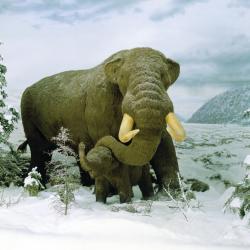Dr. Robert Feranec
Postdoctoral Fellow, 2004-2006, Biological Sciences, Stanford University, Stanford, CA.
Ph.D., 2004, Integrative Biology, University of California, Berkeley.
M.S., 1999, Geological Sciences, University of Florida, Gainesville, FL.
B.S. 1997. Biology and Earth Sciences, Syracuse University, Syracuse, NY.
While my interests encompass a broad scope of topics including influences on biogeography, causes of speciation and adaptive radiation, and triggers of extinction, my research has been focused at describing the evolution of ecology in mammals. My research concentrates on examining ecology in mammals from short time scales (seasons) to very long time scales (millions of years).
In order to understand ecology of fossil mammals, the modern quantitative and analytical techniques I employ include stable isotope geochemistry, utilization of bioinformatics databases, and computer-based imaging of fossils which permits quantitative analysis of various morphological features. Fieldwork is also an important aspect of my research program, and I have conducted or participated in excavations in the U.S. and Spain.
Typical questions addressed in my research include:
How does climate change effect ecology?
Does ecology change during development?
Does immigration/dispersal of new species affect ecology?
Does extinction/extirpation of species affect ecology?
I am interested and open to collaboration within and beyond North America. Potential collaborators, including current or potential graduate students, are encouraged to email me.
Publications
- ‹ previous
- 4 of 7
- next ›






